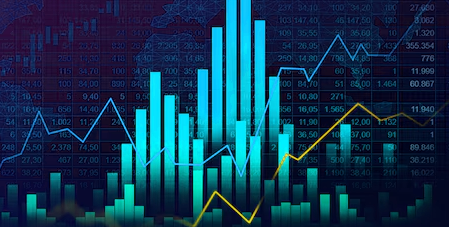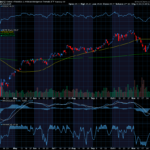by Don Wellenreiter
You have probably heard the stories. Investors just like you play the futures markets, buy options, and make huge amounts of money. Golf caddies made a few good trades and were able to retire at the ripe old age of 32. Letter carriers that have taken a few minutes from their appointed rounds to place trades from their cell phones, and ended up living in mansions.
Some of the stories are true. Options and futures in the commodities and currencies markets are designed to make you wealthy! Ordinary investors like you have made small fortunes. In my practices as a Commodity Trading Advisor (CTA), I’ve seen it happen time after time.
But then there are other stories. A limo driver takes all of his savings, buys a couple of futures contracts, and loses it all. A plumber who is tired of fitting pipes, dreams of retirement, but loses his nest egg in just 4 bad trades. These stories are also true.
Now I’ll bet you’re asking yourself a question right now. “If options and futures are designed to make you wealthy, who do most people lose money when they invest in commodities, currencies and stock index futures?

I’m glad you asked. Because, if you understand the answer, and all of its implications, you may not fall into the traps that rob the majority of investors of their dreams. Here’s the secret: Most people want to get rich right now, the first time they trade. They look at futures like a Las Vegas crap shoot or a lottery ticket. So they make a trade – any trade – without really understanding what they are doing. And when they don’t win the first time out, they decide that futures are too risky and they give up.
The majority of new traders lose everything they put on the table because they do not understand what they are doing.
While there is no such thing as instant money that you get with the wave of a magic wand, there is easy money. You just have to know a few basic techniques to get at that easy money and make it yours. And you have to know how to play by the rules. The sad truth is that most investors don’t have a clue about the rules. And they don’t know the simple, basic techniques that could make the easy money theirs.
The first thing you need to understand is why options and futures are designed to make you wealthy. The real secret of trading options and futures is that you use a small amount of money to control an asset worth a lot more. If you buy a million dollar home with a 20% down payment, you’re using leverage. Because even though you owe the bank $800,000 when the house gains in value, all of the profits are yours!
Let’s look at the numbers. You sell your million dollar house for $1,250,000 – a profit of $250,000. But you put down only $200,000. So you walk away with a profit of 125%. If you had used your own money, instead of borrowing, you would still make a $250,000 profit, but your profit rate would be just 25%. ($250,000, your profit, is 25% of the million dollars you put up to buy the house).
In this case, leveraging lets you boost your profit rate by five times. Not bad, but if you want to build real wealth of $1,000,000 or more, you’ll have to do better than that. And the good news is that you can! Commodities trading can give you leverage up to 1,000% – with almost no risk.
Let me give you an example. When you trade options and futures, you can control an asset worth $29,400 for just $28. That’s not a typo… twenty-eight dollars gets you control of real, tangible assets you can touch, smell and feel – and they’re worth $29,400. And by the way, your total risk on a trade like this is only 28!
If that asset you bought control of moves just 1.5%, you can make $420. That’s 15 times your investment. If you take the $420 and you’re able to do it again, your profit grows to $6,300. Keep on that way, and it won’t be long before you’re rich beyond your wildest dreams!
Leverage like this is no big deal in the commodities market. I’ve seen leverage of 88 to one with July corn contracts, and 374 to one with July soybeans. On copper contracts, a move of just a penny can make you a $250 profit. On sugar, a one-cent move can line your pockets with a cool $1,120 return. And if you buy the S&P 500 Index, a one point move can put $250 in your pocket.
Why the Commodities Markets Need You to Trade Options & Futures
Now that you’ve learned about the real secret behind futures and options trading, let’s talk a little bit about what commodities really are. The commodities behind futures and options contracts are an essential part of everyday life. They are raw materials, fuel, and basic food products that we can’t live without. Contrary to belief, you don’t need stocks to survive… but you do need corn, soybeans, wheat, copper, coffee, cotton, lumber, oil and natural gas. That is what makes commodity trading so invigorating. You are trading contracts on real goods and services the world needs to survive.
Big companies like General Mills, Hershey Foods, and Tyson Foods must plan months ahead of time in order to make profits. But the raw materials that are the lifeblood of their daily operations jump up and down in price. So these companies use the futures markets to lock in guaranteed prices months in advance.
General Mills is buying contracts now for sugar, wheat and corn it will use 8 to 12 months down the road. Hershey’s uses the futures market to lock in delivery of sugar and cocoa months before the big Christmas chocolate rush. And Tyson Foods uses futures to buy the grain it needs for chickenfeed when grain prices are low, after the harvest.
On the other side of the coin, farmers, ranchers, miners and other producers of commodities want to lock in prices ahead of the harvest or production, so they are sure they can make a profit. The futures market is designed to benefit both producers and users. They can all guarantee their prices ahead of time. It’s almost like buying insurance.
But in order for commodities markets to work efficiently, futures contracts have to be traded on a daily basis. That’s where traders like you and I come in. Continual buying and selling of contracts by traders helps the marketplace set realistic prices. Ninety-seven percent of commodities trades are made by traders or speculators like you. The futures marketplace is counting on the millions of trades made by speculators to determine the true value of the commodities on a minute-by-minute basis. And just to make sure that everything is fair and square, it’s supervised by an agency of the US Government.
However, while many futures and options contracts are based on raw materials, not all of them are. You can buy options and futures on contracts for future delivery of currencies, like the US Dollar, Swiss Franc and Pound Sterling. In addition, you can also buy futures and options contracts on financial indexes like the S&P 500 and the New York Stock Exchange Index. Like the raw materials, the thousands of daily trades made by investors like you, help to set prices in the marketplace.
There is a great deal of money to be made trading these futures and options, especially when the stock market is volatile!











Recent Comments